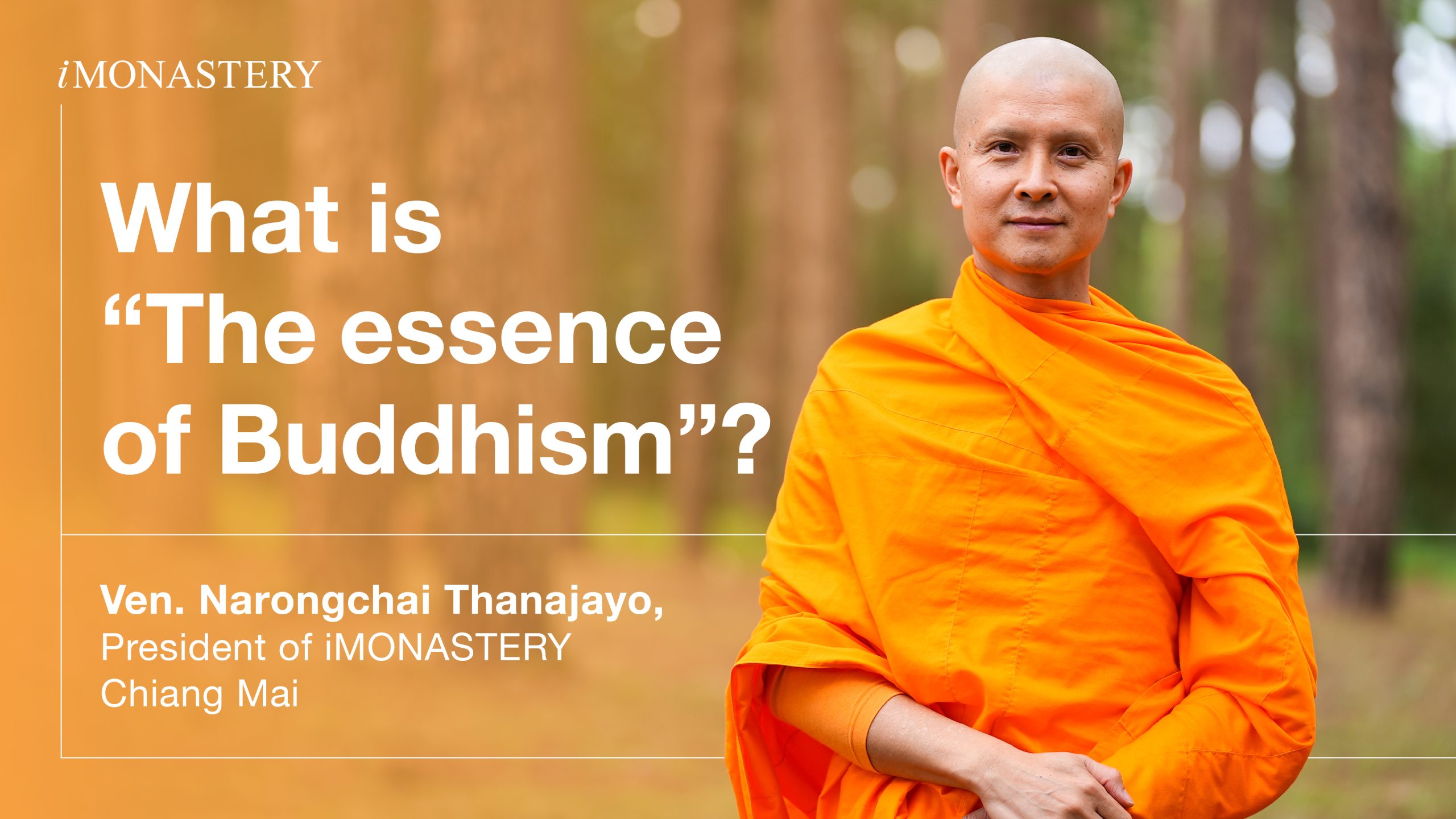
What is “The Essence of Buddhism”?
Ven. Narongchai Thanchayo, President of the Chiang Mai International Monastic Residence, explained that the heart of Buddhism is crucial. In English, we refer to this as “The Essence of Buddhism.” Let’s explore this concept.
Buddhism is practiced by two groups of people:
- The lay group: This group consists of individuals who live and participate in the secular world, engaging in everyday activities and responsibilities, such as work and family life.
- The monastic group: This group comprises monks who have renounced worldly possessions and do not maintain a personal household, dedicating their lives to spiritual practice.
If one studies and practices Buddhism correctly, it will bring happiness to their life, whether they are laypeople or monks. “Nirvana” is the state where all suffering ends. Therefore, both groups share the same ultimate goal: liberation from suffering.
If we consider Nirvana as the destination everyone is striving to reach, monks travel on the expressway, as they believe that a life dedicated to monasticism is a carefree and joyful path. Laypeople also practice Buddhism in their daily lives, finding happiness in ordinary life as it is today.
Many people believe that if given the chance, they would also like to pursue the path to Nirvana.
The Buddha’s teachings can be divided into five groups:
- Avoid Evil, Do Good, Purify Your Mind. Basic guidelines for ethical behavior and mental clarity.
- The Four Noble Truths. Core principles about the nature of suffering and how to overcome it.
- The Threefold Training. This includes Morality (Sīla), Concentration (Samādhi), and Wisdom (Paññā).
- Anatta (Non-Self). The concept that there is no permanent, unchanging soul or self.
- Itappaccayatā (Dependent Origination). The principle of Paticcasamuppāda, which explains the interdependent nature of phenomena and the process of causation.
Buddhism began with which teachings?
The Lord Buddha gave his first sermon on Earth, known as the Dhammacakkappavattana Sutta, introducing his core teachings to the five ascetics (Panchavaggis) after their enlightenment. In this sermon, he presented the Four Noble Truths, which are:
- Dukkha – Suffering and various forms of discomfort in life.
- Dukkha Samudaya – The cause of suffering, which is desire and attachment.
- Dukkha Nirodha – The end of suffering, achieved through Nirvana.
- Dukkha Nirodha Gamini Patipada – The Eightfold Path, the practical way to end suffering.
What causes suffering?
Suffering arises from three types of cravings:
- Desire or Lust – The craving for pleasure and sensory experiences.
- Desire to Be (Bhavatanhā) – The craving for existence, identity, or becoming something.
- Desire Not to Be (Vibhavatanhā) – The craving to avoid or escape from existence or certain experiences.
The Buddha taught the method for liberation and the cessation of suffering, known as the Eightfold Path, which includes:
- Right View – Understanding and approval of the nature of reality.
- Right Intention – Cultivating the right mindset and intentions.
- Right Speech – Engaging in truthful and harmonious dialogue.
- Right Action – Acting in ways that are ethical and beneficial.
- Right Livelihood – Choosing a profession that does not harm others.
- Right Effort – Making the effort to develop and sustain wholesome qualities.
- Right Mindfulness – Maintaining awareness and mindfulness.
- Right Concentration – Developing deep mental focus and meditation.
In summary, the Eightfold Path can be grouped into three main categories:
- Ethical Conduct
- Mental Development
- Wisdom
What is Itappaccayatā?
Itappaccayatā is a concept related to Paticcasamuppāda, often referred to as Dependent Origination. It means that everything arises due to specific conditions and causes. Essentially:
. When this exists, that exists – This indicates that if one condition is present, it leads to the occurrence of another condition.
. When this does not exist, that does not exist – This means if the initial condition is absent, the subsequent condition will also be absent.
In simpler terms, Itappaccayatā illustrates the principle of conditionality: A causes B or If A is not present, then B does not occur.
The Buddha taught that everything that arises naturally will eventually cease. This understanding leads us to salvation and captures the essence of the Buddha’s teachings.
To achieve liberation, we should focus on:
. Abandoning Evil – Refrain from harmful actions and intentions.
. Doing Good – Engage in positive actions and cultivate virtue.
. Purifying the Mind – Develop a clear and mindful mind.
By practicing these principles—doing good, avoiding harm, and purifying the mind—we can achieve true liberation and enlightenment.
